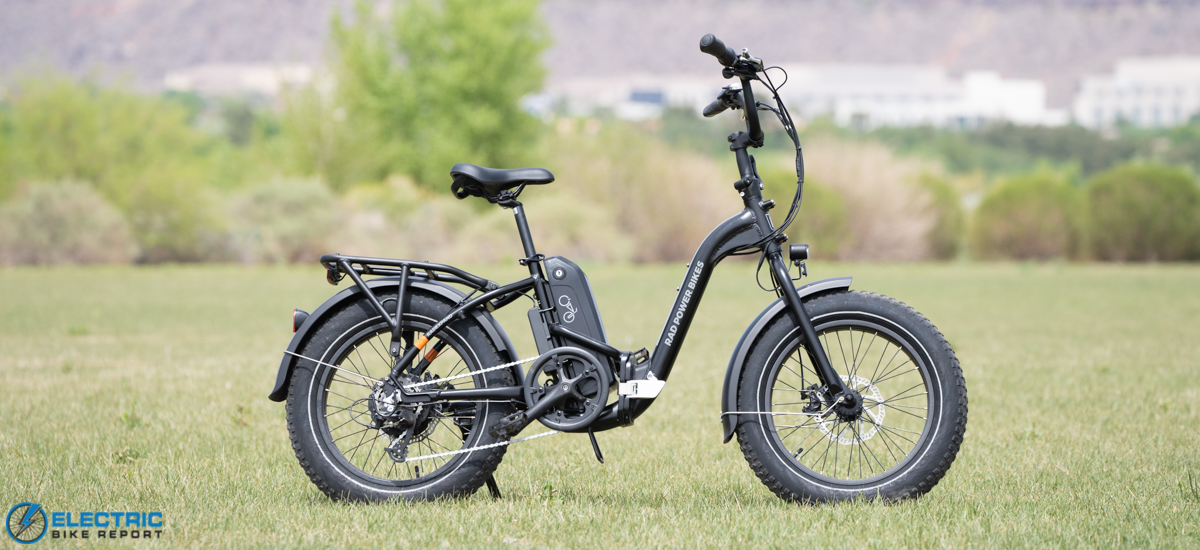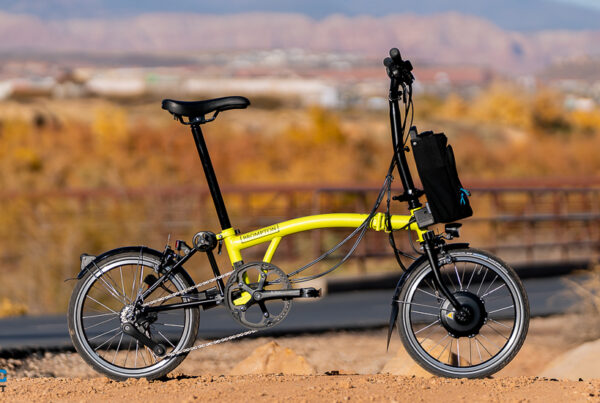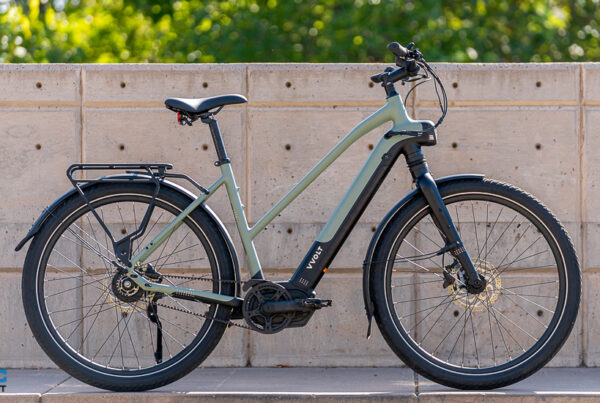One thing that’s notably missing on the RadExpand 5 that we saw on the RadMini 4 is a suspension fork. This new version of Rad’s folding bike is rigid. Aside from the fat tires, there’s nothing to take that edge off rough patches.
After testing this bike, I think there’s some pros and cons to the decision to nix the fork.
On the cons side, the ride is a little rougher. On nasty asphalt or when hitting a bump you can feel more. Tire pressure is going to be key here, as those fat tires can work as a sort of suspension when inflated correctly, but don’t set the pressure too low or risk getting a flat.
On the plus side, it does simplify the bike and remove one of the most failure prone components, especially among low-cost e-bikes. Suspension is complicated and expensive — reliable suspension is even more complicated and expensive. The best front suspension forks on the market right now cost almost as much as this entire e-bike, and the cheap stuff can sometimes fail. Which means you either need to replace it or your bike becomes an ornament for the corner of your garage.
For me, I take the latter perspective. I ride lots of e-bikes for lots and lots of time, and I’ve seen some of the budget forks fail or degrade in performance to the point that they’re just not really doing anything anymore — and that degradation in performance can happen a lot quicker than you’d expect. To me, its lack of a fork makes me think this is an e-bike built for the long run (it also helps keep cost down).
Next I want to point to this bike’s cockpit, where there is another thing missing that you normally see on electric folding bikes. But this time, there’s no point in talking about pros and cons. This time, it’s a definite pro.
There’s no handlepost.
The handlepost is this big adjustable stalk mechanism we see on folding bikes that allows the bars to move up and down and be folded next to the frame. They work, but they can also be flexy, rattly and often use narrow handlebars that quicken the already notoriously quick folding bike handling.
Instead, Rad has fitted the RadExpand with a set of BMX-style riser bars. They still fold — Rad appears to have come up with a handlepost-inspired folding mechanism — but it’s far better than the handle posts I’ve used in the past.
That simple change has made this bike probably the best handling folder in its class in my opinion.
Lastly, I want to talk a bit about how this e-bike handles off-road. It’s marketed as an off-road capable e-bike, this style of folder has become very popular with the RV and National Park-hopping crowd, it uses fat knobby tires and I know many of you watching this are probably envisioning some sort of adventure in the dirt on this thing.
So can this go off-road? Yes, but like nearly every other e-bike sold at this price point, there are limitations and some things to consider.
To put it short, I’d assess this e-bike as ready for smooth dirt roads and maintained gravel paths. Basically anywhere you could take a standard Subaru Outback.
The tires do grip fairly well in dirt and they do help with bumps, but the lack of suspension means this bike really transmits bumps and vibrations directly into your body. You can feel a lot when riding it.
Whether that’s a pro or a con is up for debate. Some people will appreciate being able to “feel” the ground beneath them, others might not.
Source link








